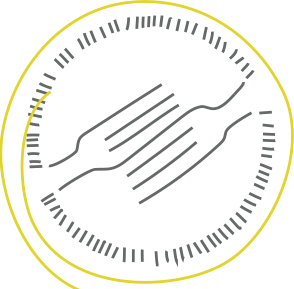Cooking Is Totally Tech
© Geir Magnusson
At a recent food conference, I had the great honor of speaking on a panel—Food and Nutrition Education. It was a unique day with many accomplished and fascinating folks, thought provoking conversation and good food, all in a fairly intimate setting.
Post lunch, a panel—What’s New/Next in Food Business: Trends and Directions—included the Kickstarter Food and Crafts liaison, a young woman who authored a book on millennials and food to a kid running a restaurant out of his dorm room. An interesting mash up for sure but one that left me feeling incredibly disheartened and frustrated not only because mostly every panelist was a touch too hipster for my liking but also because they were over concerned with novelty rather than understanding that before we move on to the next best thing, we need to focus on finding solutions for a very broken food system.
The future of food should neither be about raising capital through a crowd-funding platform for a voluptuous vegan muffin nor should it be about pontificating on passing trends. And bragging about dorm room eateries? Give me a break! The future of food should be about rebuilding our food foundation throughout industry, government and consumer choice. If so, resolving our human and environmental health crisis could actually be a reality.
I am not a dream crusher by any stretch but 15,000 new edible products are introduced per year. Micro gastronomy and food trucks may offer flavor but surely not fortitude, something desperately needed if we hope to make this world a better place. And I was cooking out of my dorm room and sharing my creations with several classmates in the late 1980’s at Hamilton College because I had health issues and campus food was atrocious. I didn’t do it just because it was cool and trendy.
Sorry to be a buzz kill but I am tired of the top down approach. Perhaps that is why Chefs Setting The Menu, another panel, appealed to my back to basics approach. Culinary icons including Eric Ripert and Cesare Casella shared the stage with “hot” newbie chef Deuki Hong who exercised a measure of humility that not only displayed great character but also shamed the above noted “trendsetters”. When Hong was asked what it takes to be a “star chef” he replied, after he was sure to remind the audience that he wasn’t a star by any measure (while glancing at Ripert and Casella), that it takes true passion and countless hours working on knife skills until your hands bleed. It’s not often that I feel instant admiration for someone—but Deuki Hong had me at “knife skills until your hands bleed.”
Which brings me to this question—is what’s trending in food your thing or is the timeless tradition of cooking and sharing a meal top priority? While the latter is my choice, for most it’s not. And not because you don’t want it to be, it’s just that you are challenged like so many others—time constraints and falling prey to food marketing can do that to anyone!
Thus I have this to offer—to appeal to the hipsters and the anti-folk, let’s consider that cooking is what’s totally tech (because actually it is) and that connecting to food in a real way (not in a fad kinda way) is the future of food. We don’t need trends or gadgets to make a great meal. We need knife skills and the education to navigate healthy ingredients (an necessary investment in you and your family). With that, human and environmental health will inevitably be the top priority (and maybe we have a shot at solving our global health crisis).
So dear readers, I offer this brief excerpt from my book that will hopefully inspire you to get in the kitchen, find your inner cook and create a starting point that suits you. Believe it or not, cooking begins with organization and connection.
Sometimes people just need a little help shifting priorities. And often the solution is very simple: planning ahead. So this is the advice I gave my friend to organize eats for herself and her family:
- On a Friday or over the course of the weekend (or whatever day best suits you), take ten to fifteen minutes to plan a weekly menu for the upcoming week.
- Then take a minute to look at your upcoming week’s schedule to determine when you will be able to food shop and cook.
- For food shopping, I like to do a big shop once or twice a month with a smaller shop weekly as perishables are needed; this tactic is useful if you want to save time and money and limit food waste.
- Even as an avid cook, I can’t be in the kitchen every night, so I aim to cook three nights per week.
- For the other nights, I pick a day during the week to prepare a few staple dishes such as vegetarian chili, turkey meatballs, and a soup or two (all resident recipes in this book). This helps guarantee Stefanie-approved nourishment on the nights that I can’t cook. With a little reheating and supplementation with a quick salad, vegetable, and/ or starch, a balanced meal is born.
- And there are those nights that pizza or some prepared food is what feeds the frenzy.
My reality is not different from most. Navigating food is just my expertise. So take some advice from this soul sister: Planning food for you and your family a week in advance will save you time and money and reduce stress. Create realistic goals for yourself, even if it means that you cook only one to two nights per week. For many, that alone is a great start.
Reprinted with permission from What The Fork Are You Eating by Stefanie Sacks (© 2014 Tarcher | Penguin Random House)
To stay connected (I LOVE hearing from you), follow me on Facebook, Twitter and Instagram.

